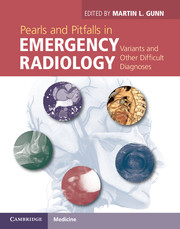Case 5 - Arachnoid granulations
from Neuroradiology: extra–axial and vascular
Published online by Cambridge University Press: 05 March 2013
Summary
Imaging description
Arachnoid villi represent the normal sites of cerebrospinal fluid (CSF) resorption from the subarachnoid space into the venous sinuses. The villi are not visible radiologically, but they may enlarge over time due to distension with CSF. This causes progressive penetration of the arachnoid membrane into the dura, beneath the vascular endothelium of the venous sinus. The result is formation of an arachnoid granulation. These granulations tend to increase in size and number with age.
Arachnoid granulations are most commonly located within the transverse sinuses, superior sagittal sinus, and parasagittal venous lacunae [1]. They usually range in size from 2 to 8 mm [2], though may be larger than 10 mm at which time they are referred to as “giant” arachnoid granulations.
Contrast-enhanced CT demonstrates a round or oval filling defect within a dural venous sinus. An arachnoid granulation typically occurs where a superficial vein drains into the venous sinus, which is thought to induce a focal weakness in the sinus wall. There may be a smooth corticated erosion of the adjacent calvarium. A granulation will never demonstrate hyperattenuation on non-enhanced CT, unlike dural venous sinus thrombosis, which commonly demonstrates increased attenuation (Figures 5.1 and 5.2).
Usually, an arachnoid granulation will follow CSF signal on all MR sequences (Figure 5.3) [3]. However, several studies have demonstrated that this rule does not always hold true, especially with giant granulations. For instance, the signal may be higher than CSF on both T1- and T2-weighted images, and suppression on FLAIR images may be incomplete. In these cases, the characteristic shape, location, and lack of solid enhancement are helpful clues to the correct diagnosis [4].
Information
- Type
- Chapter
- Information
- Pearls and Pitfalls in Emergency RadiologyVariants and Other Difficult Diagnoses, pp. 14 - 16Publisher: Cambridge University PressPrint publication year: 2013
References
Accessibility standard: Unknown
Why this information is here
This section outlines the accessibility features of this content - including support for screen readers, full keyboard navigation and high-contrast display options. This may not be relevant for you.Accessibility Information
- 1
- Cited by
